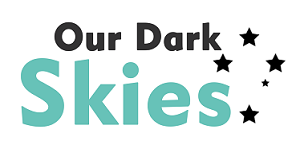In the modern-day, the website acts as a digital business card and represents the face of your business. Whether you are launching a startup, creating a blog, or developing an e-store, website optimization is one of the first steps that you need to take to restrain your audience.
These days, developing a website and connecting with hosting providers, such as pk hosting, isn’t enough to get the maximum audience. This is because the modern audience requires more than just a simple website. A big turn-off for almost 95% of the users is the slow loading speed of your site.
Therefore, it becomes mandatory to optimize website performance to get an edge over your competitors. But optimizing website performance is often difficult for beginners. This is where this blog comes in by providing key things to check when optimizing website performance. So let’s explore.
Things to Check When Optimizing Website Performance
Website speed is the first impression of your business in front of your potential customers. If you lack in providing the perfect image of your business, you may lack in getting the leads and sales. Therefore, enhancing website performance is crucial for your business’s success.
Website performance is composed of several components, including uptime, page load speed, easy-to-use interface, and much more. In short, website performance is all about creating an effective user experience that meets their expectations. But often, many beginners fail to optimize website performance due to not implementing the best practices.
But when optimizing the website performance, you must need to opt for the best solutions.
Following are the key things that you need to check when optimizing website performance.
-
TTFB
TTFB or Time to First Byte refers to the time it takes to receive the first byte from the server. It measures the waiting time of the browser request for the server to complete the processing. Therefore, this is one of the key important things that you need to check when optimizing website performance. Commonly it is affected by the following actions.
- Processing & generating response
- Sending requests to the server
- Sending response to the client
-
Image Optimization
Images are the most common part of every site. Whether it’s an e-store or a blog, everyone prefers putting a high-quality image on their site to engage the audience. But often, these images turn out to be the biggest restriction between you and your audience. This is because they take high loading time and more bandwidth.
Therefore, it becomes necessary for you to opt for image optimization. You can use image optimizers to shrink the file of the image without compromising on image quality. This is an important factor to consider when optimizing website performance.
-
Uptime
Without staying online, it is evident that you cannot survive in the digital world. Therefore, it is necessary to have a good uptime of your site to get more leads and sales. Thus uptime becomes a vital part when optimizing your website performance. You need to ensure that your hosting provider provides a maximum of 99.99% guaranteed uptime.
This ultimately helps you to make your site online for your audience up to the maximum extend. However, if your site receives more downtime, you may never get able to get maximum leads and visitors.





